S (named ess /?s/, plural esses) is the 19th letter in the Modern English alphabet and the ISO basic Latin alphabet.
| S | |||||
|---|---|---|---|---|---|
| S s | |||||
| (See below) | |||||
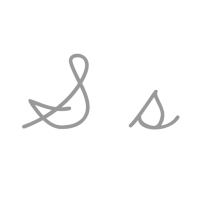 | |||||
| Usage | |||||
| Writing system | Latin script | ||||
| Type | Alphabet ic and Logographic | ||||
| Language of origin | Latin language | ||||
| Phonetic usage |
/?s/ | ||||
| Unicode value |
U+0053, U+0073 | ||||
| Alphabetical position | 19 | ||||
| History | |||||
| Development |
| ||||
| Time period | ~-700 to present | ||||
| Descendants |
• ? • ß • ? • ? • $ • ? • § • ? • ? • ? | ||||
| Sisters |
? ? ? ? ? ? ? ? ? ? ???? ???? ? ? (disputed) ? (disputed) ? ? ? ? ? ? | ||||
| Variations | (See below) | ||||
| Other | |||||
| Other letters commonly used with | s(x), sh, sz | ||||
Contents
History
Origin
Northwest Semitic šîn represented a voiceless postalveolar fricative /?/ (as in 'ship'). It originated most likely as a pictogram of a tooth (???) and represented the phoneme /?/ via the acrophonic principle.
Greek did not have a /?/ phoneme, so the derived Greek letter Sigma (?) came to represent the voiceless alveolar sibilant /s/. While the letter shape ? continues Phoenician šîn, its name sigma is taken from the letter samekh, while the shape of samekh but name and position of šîn is continued in the xi. Within Greek, the name of sigma was influenced by its association with the Greek word ???? (earlier *sigj-) "to hiss". The original name of the letter "sigma" may have been san, but due to the complicated early history of the Greek epichoric alphabets, "san" came to be identified as a separate letter, ?. Herodotus reports that "San" was the name given by the Dorians to the same letter called "Sigma" by the Ionians.
The Western Greek alphabet used in Cumae was adopted by the Etruscans and Latins in the 7th century BC, over the following centuries developing into a range of Old Italic alphabets including the Etruscan alphabet and the early Latin alphabet. In Etruscan, the value /s/ of Greek sigma (????) was maintained, while san (????) represented a separate phoneme, most likely /?/ (transliterated as ?). The early Latin alphabet adopted sigma, but not san, as Old Latin did not have a /?/ phoneme.
The shape of Latin S arises from Greek ? by dropping one out of the four strokes of that letter. The (angular) S-shape composed of three strokes existed as a variant of the four-stroke letter ? already in the epigraphy in Western Greek alphabets, and the three and four strokes variants existed alongside one another in the classical Etruscan alphabet. In other Italic alphabets (Venetic, Lepontic), the letter could be represented as a zig-zagging line of any number between three and six strokes.
The Italic letter was also adopted into Elder Futhark, as Sowil? (?), and appears with four to eight strokes in the earliest runic inscriptions, but is occasionally reduced to three strokes (?) from the later 5th century, and appears regularly with three strokes in Younger Futhark.
Long s
The minuscule form ?, called the long s, developed in the early medieval period, within the Visigothic and Carolingian hands, with predecessors in the half-uncial and cursive scripts of Late Antiquity. It remained standard in western writing throughout the medieval period and was adopted in early printing with movable types. It existed alongside minuscule "round" or "short" s, which was at the time only used at the end of words.
In most western orthographies, the ? gradually fell out of use during the second half of the 18th century, although it remained in occasional use into the 19th century. In Spain, the change was mainly accomplished between the years 1760 and 1766. In France, the change occurred between 1782 and 1793. Printers in the United States stopped using the long s between 1795 and 1810. In English orthography, the London printer John Bell (1745–1831) pioneered the change. His edition of Shakespeare, in 1785, was advertised with the claim that he "ventured to depart from the common mode by rejecting the long '?' in favor of the round one, as being less liable to error....." The Times of London made the switch from the long to the short s with its issue of 10 September 1803. Encyclopædia Britannica's 5th edition, completed in 1817, was the last edition to use the long s.
In German orthography, long s was retained in Fraktur (Schwabacher) type as well as in standard cursive (Sütterlin) well into the 20th century, and was officially abolished in 1941. The ligature of ?s (or ?z) was retained, however, giving rise to the Eszett, ß in contemporary German orthography.
Use in writing systems
The letter ?s? is the seventh most common letter in English and the third-most common consonant after ?t? and ?n?.[8] It is the most common letter in starting and ending position.[citation needed]
In English and many other languages, primarily Romance ones like Spanish and French, final ?s? is the usual mark of plural nouns. It is the regular ending of English third person present tense verbs.
?s? represents the voiceless alveolar or voiceless dental sibilant /s/ in most languages as well as in the International Phonetic Alphabet. It also commonly represents the voiced alveolar or voiced dental sibilant /z/, as in Portuguese mesa (table) or English 'rose' and 'bands', or it may represent the voiceless palato-alveolar fricative [?], as in most Portuguese dialects when syllable-finally, in Hungarian, in German (before ?p?, ?t?) and some English words as 'sugar', since yod-coalescence became a dominant feature, and [?], as in English 'measure' (also because of yod-coalescence), European Portuguese Islão (Islam) or, in many sociolects of Brazilian Portuguese, esdrúxulo (proparoxytone) in some Andalusian dialects, it merged with Peninsular Spanish ?c? and ?z? and is now pronounced [?]. In some English words of French origin, the letter ?s? is silent, as in 'isle' or 'debris'.
The ?sh? digraph for English /?/ arises in Middle English (alongside ?sch?), replacing the Old English ?sc? digraph. Similarly, Old High German ?sc? was replaced by ?sch? in Early Modern High German orthography.
Related characters
- ? : Latin letter long S, an obsolete variant of S
- ? ? : Various forms of long S were used for medieval scribal abbreviations[9]
- ? ß : German Eszett or "sharp S", derived from a ligature of long s followed by either s or z
- S with diacritics: ? ? ? ? ? ? ? ? ? ? ? S? s? ? ? ? ? ? ? Š š ? ? ??? S? s? ? ? ? ?[10] ?[11]
- ? : Subscript small s was used in the Uralic Phonetic Alphabet prior to its formal standardization in 1902[12]
- ? : Modifier letter small s is used for phonetic transcription
- ? : Small capital S was used in the Icelandic First Grammatical Treatise to mark gemination[13]
- ? ? : Latin letter reversed S (used in Zhuang transliteration)
- IPA-specific symbols related to S: ? ?[citation needed] ?
- ? ? : Insular S
Derived signs, symbols and abbreviations
- $ : Dollar sign
- ? : Spesmilo
- § : Section sign
- ? : Service mark symbol
- ? : Integral symbol, short for summation
Ancestors and siblings in other alphabets
- ???? : Semitic letter Shin, from which the following symbols originally derive
- archaic Greek Sigma could be written with different numbers of angles and strokes. Besides the classical form with four strokes (
Watch movie S online on Amazon
Watch movie S online
Watch The Movie On PrimeKabzaa-The Mafia Raaj Full HD Movie Download

Duet Full HD Movie Download
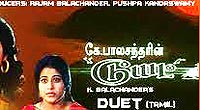
Veerta Full HD Movie Download

Chunauti Full HD Movie Download
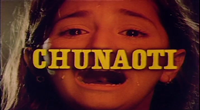
Jyoti Bane Jwala Full HD Movie Download

Kshtriya - The Warrior Full HD Movie Download

Rang De Basanti Full HD Movie Download

Julie (1975) Full HD Movie Download
.jpg)
Bhavnao Ko Samjho Full HD Movie Download
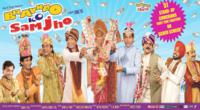
Inquilab (1984) Full HD Movie Download
.jpg)
Idhaya Thirudan Full HD Movie Download
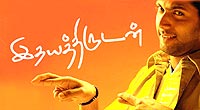
Maleyali Jotheyali Full HD Movie Download
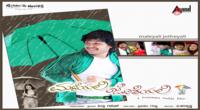
Thodu Needa Full HD Movie Download
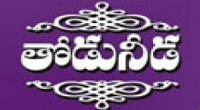
Ra Ra Krishnayya Full HD Movie Download
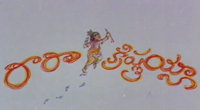
Har Raat Naya Khiladi Full HD Movie Download

Adavi Manushulu Full HD Movie Download
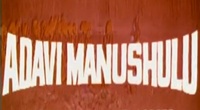
Chandra Mukhi Full HD Movie Download
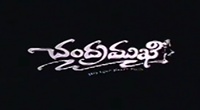
Devi Abhayam Full HD Movie Download
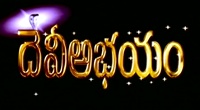
Alexander Full HD Movie Download

Shena Full HD Movie Download
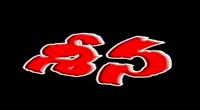
Dhoom 2 Full HD Movie Download

Download latest Movie from bollywood
- 1> baaghi 3
- 2> THE SKY IS PINK MOVIE FULL STORY AND REVIEW
- 3> Luka Chuppi
- 4> TO ALL THE BOYS I’VE LOVED BEFORE
- 5> Kabir Singh
- 6> Street Dancer 3D
- 7> Simmba
- 8> Gone Girl
- 9> The Girl Who Lived
- 10> Ludo
- 11> DILWALE DULHANIA LE JAYENGE
- 12> GUILTY
- 13> The Godfather
- 14> Adventures of Rusty
- 15> Sooryavanshi
- 16> Satyameva Jayate 2
- 17> Thappad
- 18> Bhool Bhulaiyaa 2
- 19> KGFChapter 2
- 20> Mardaani 2
- 21> Pinjar
- 22> Shivaji maharaj
- 23> Ek Villian 2
- 24> Hungama 2
- 25> Divergent
- 26> Mumbai Saga
- 27> The Internship
- 28> HIT (telugu)
- 29> Panga
- 30> The perfect date
- 31> 16 December
- 32> Gopala Gopala (Telugu)
- 33> Brahmastra
- 34> Gangubai Kathiawadi
- 35> Manmadhudu
- 36> Nenu local
- 37> Mahanati
- 38> Shatamanam bavathi
- 39> Lagaan
- 40> After
- 41> MOM
- 42> Shamshera
- 43> Raguvaran BTech
- 44> Khakee
- 45> The villain
- 46> OM
- 47> Mr. perfect
- 48> Bueatifull mind
- 49> Hichki
- 50> Gabbar Singh
- 51> Jogi
- 52> Before Sunrise
- 53> Before Sunset
- 54> Before Midnight
- 55> The Big Bull
- 56> Top Gun: Maverick
- 57> The Purge
- 58> The Sky is Pink
- 59> Laxmmi Bomb
- 60> Sadak 2
- 61> Sufna
- 62> Prithviraj
- 63> PK
- 64> Coolie No 1(2020)
- 65> Black Widow
- 66> Dear Zindagi
- 67> Dil Bechara
- 68> PHIR HERA PHERI
- 69> WAR
- 70> Dostana
- 71> RRR: Roudram Ranam Rudhiram
- 72> Maidan
- 73> Dabbang 3
- 74> Chhalaang
- 75> life as we know it
- 76> SherShaah
- 77> Sandeep Aur Pinky Faraar
- 78> Event Horizon
- 79> 83
- 80> Radhe: Your Most Wanted Bhai
- 81> Gunjan Saxena: The Kargil Girl
- 82> Mr India
- 83> Vivah
- 84> Anokha Bandhan
- 85> Ghost
- 86> Bhoot: Part One - The Haunted Ship
- 87> Haseen Dilruba
- 88> Laal Singh Chaddha
- 89> Qismat
- 90> Rajput
- 91> Drive
- 92> Dil Chahta Hai
- 93> Dil Ki Baazi
- 94> Dil Ka Rishta
- 95> Teesri Manzil
- 96> Dil
- 97> Love Aaj Kal
- 98> Khaali Peeli
- 99> Bunty Aur Babli 2
- 100> Atrangi Re
- 101> Gulabo Sitabo
- 102> Jodi
- 103> Suraj Pe Mangal Bhari
- 104> Deewana
- 105> Attack
- 106> Sardar Udham Singh
- 107> Toofan
- 108> THE LOVEBIRDS
- 109> Jersey
- 110> Ginny Weds Sunny
- 111> Thalaivi
- 112> Shiddat
- 113> Angels vs Zombies
- 114> Koi Mil Gya
- 115> Thank God
- 116> Bhuj: The Pride of India
- 117> Hum Aapke Hain Kaun
- 118> The Platform
- 119> Bird Box
- 120> Roohi Afzana
- 121> Torbaaz
- 122> Nikamma
- 123> World War Z
- 124> Extraction
- 125> Train to Busan
- 126> Life of Pi
- 127> SHAADI MEIN JROOR AANA
- 128> Himmat Aur Mehnat
- 129> To All The Boys: P.S. I Still Love You
- 130> Mimi
- 131> Good Newwz
- 132> Shubh Mangal Zyada Saavdhan
- 133> Raabta
- 134> Harry Potter and the Philosopher's Stone
- 135> Harry Potter and the Chamber of Secrets
- 136> Chhapaak
- 137> War of the Worlds
- 138> Harry Potter and the Prisoner of Azkaban
- 139> Harry Potter and the Goblet of Fire
- 140> MURDER MYSTERY
- 141> Shakuntala Devi
- 142> Bachchan Pandey
- 143> Jayeshbhai Jordar
- 144> Sheer Qorma
- 145> Saina
- 146> 'O' Pushpa I hate tears
- 147> Kedarnath
- 148> MS Dhoni The Untold Story
- 149> Chhichhore
- 150> Badhaai Ho
- 151> Unstoppable
- 152> Oz the Great And Powerful
- 153> The Girl on the Train
- 154> Haathi Mere Saathi 2020
- 155> The Conjuring: The Devil Made Me Do It
- 156> Gandhi Se Pehle Gandhi
- 157> The Song of Scorpions
- 158> Srimanthudu
- 159> Hello Guru Prema Kosame
- 160> Beauty and The Beast
- 161> Black Panther
- 162> Charlie and the Chocolate Factory
- 163> Bole Chudiyan
- 164> Fidaa
- 165> Duvvada Jagannadham
- 166> Bruce Lee: The Fighter
- 167> Hyper
- 168> Yaara
- 169> Red (2020)
- 170> Shivam
- 171> That Is Mahalakshmi
- 172> Nishabdham
- 173> Aashram 2020 web series
- 174> Laxmii
- 175> Mismatched
- 176> STUDENT OF THE YEAR 2
- 177> NAIL POLISH
- 178> Ramprasad Ki Tehrvi
- 179> KAAGAZ
- 180> 12 o Clock
- 181> The Power
- 182> bolo hau
- 183> Tribhanga
- 184> JAMUN
- 185> Madam Chief Minister
- 186> Maasaab
- 187> Aadhaar
- 188> Tanhaji
- 189> Bhaagi 3
- 190> Bhootnath
- 191> MALANG
- 192> Jai Mummy Di
- 193> Haathi Mere Saathi 2021
- 194> Shakeela
- 195> Unpaused
- 196> Annayya
- 197> Vamsoddharakudu
- 198> Mrugaraju
- 199> Narasimha Naidu
- 200> Sankranti
- 201> Manasu Maata Vinadhu
- 202> Anjaane
- 203> Apaharan
- 204> Bachke Rehna Re Baba
- 205> Bewafaa
- 206> Roohi
- 207> Radhe
- 208> Zindagi Khoobsoorat Hai
- 209> Yeh Mohabbat Hai
- 210> Yeh Kya Ho Raha Hai?
- 211> The Tomorrow War
- 212> DehradunDiary
- 213> Meri Shaadi Karaoo
- 214> Matruu Ki Bijlee Ka Mandola
- 215> No One Killed Jesica
- 216> Aag Ka Goola
- 217> Eight Million Dollars
- 218> Three Hundred
- 219> Cats and Dog
- 220> Decoy
- 221> Gold Rush
- 222> You Have Got Mail
- 223> Final Destination three
- 224> Tofan
- 225> Jungle
Request for Download movie S
- Bollywood movies
- Latest Bollywood movies
- Download all bengali movies
- Download all bhojpuri movies
- Download all english movies
- Download all gujarati movies
- Download all hindi movies
- Download all kannada movies
- Download all malayalam movies
- Download all marathi movies
- Download all oriya movies
- Download all punjabi movies
- Download all tamil movies
- Download all telugu movies
- Bollywood action movies
- Bollywood adventure movies
- Bollywood animation movies
- Bollywood classical movies
- Bollywood comedy movies
- Bollywood crime movies
- Bollywood devotional movies
- Bollywood documentary movies
- Bollywood drama movies
- Bollywood family movies
- Bollywood fantasy movies
- Bollywood historical movies
- Bollywood history movies
- Bollywood horror movies
- Bollywood musical movies
- Bollywood mystery movies
- Bollywood mythological movies
- Bollywood patriotic movies
- Bollywood romance movies
- Bollywood romantic movies
- Bollywood sci-fi movies
- Bollywood social movies
- Bollywood spiritual movies
- Bollywood sports movies
- Bollywood suspense movies
- Bollywood thriller movies
- Bollywood war movies
- Hot actress list
- Hot gujarati actress list
- Hot tamil actress list
- Hot bhojpuri actress list
- Hot assam actress list
- Hot bihari actress list
- Hot jammu and kashmir actress list
- Hot gujarati actress list
- Hot haryana actress list
- Hot konkani actress list
- Hot marathi actress list
- Hot odia actress list
- Hot punjabi actress list
- Hot rajasthani actress list
- Hot kannada actress list
- Hot malayalam actress list
- Hot telugu actress list
- Hot tulu actress list
- Hot Actress list from Indian city
- Hot actress list from ahmedabad
- Hot actress list from alappuzha
- Hot actress list from bangalore
- Hot actress list from bangalore
- Hot actress list from bhopal
- Hot actress list from chandigarh
- Hot actress list from chennai
- Hot actress list from guwahati
- Hot actress list from hyderabad, india
- Hot actress list from indore
- Hot actress list from jaipur
- Hot actress list from kannur
- Hot actress list from kochi
- Hot actress list from kolkata
- Hot actress list from kollam
- Hot actress list from kottayam
- Hot actress list from kozhikode
- Hot actress list from lucknow
- Hot actress list from madurai
- Hot actress list from mangalore
- Hot actress list from mumbai
- Hot actress list from mysore
- Hot actress list from new delhi
- Hot actress list from patna
- Hot actress list from pune
- Hot actress list from thiruvananthapuram
- Hot actress list from thrissur
- Hot actress list from tiruchirappalli
- Hot actress list from vijayawada
- Hot actress list from visakhapatnam
- All Bollywood Movies
- Bollywood Celeb
- >Art Director
- >Audiography
- >Background Music
- >Banner
- >Choreographer
- >Cinematographer
- >Costume Designer
- >Dialogue Writer
- >Director
- >Distributor
- >Editor
- >Executive Producer
- >Hair Stylist
- >Lyricist
- >Music Director
- >Photographer
- >Playback Singers
- >Presenter
- >Producer
- >Production Company
- >Production Designer
- >Screenplay
- >Singer
- >Sound
- >Actor
- >Story Writer
- >Studio
- >Video Director
- >Miscellaneous
- >Publicity (pro)
- >Web Creator
- >Production Labs
- >Publicity Design
- >Publicity Stills
- >Writer
- >Miscellaneous Artists
- >Visual Effects
- >Reporter
- >Music Company
- >Shooting Studios
- >Picturised On
- >Line Producer
- >Co Producer
- >Asst Director
- >Casting Director
- >Cinematography
- >Choreography
- >Dialouge
- >Editing
- >Lyrics
- >Music
- >Story
- >Playback Singer Female
- >Playback Singer Male
- >Actor In A Comic Role (male/female)
- >Child Artiste
- >Ensemble Cast
- >Actor Popular Choice (male)
- >Actor Popular Choice (female)
- >Sa Re Ga Ma Pa Song Of The Year
- >Actor In Supporting Role
- >Actress In Supporting Role
- >Actor In Leading Role
- >Art Direction
- >Actress In Leading Role
- >Sound Recording
- >Costume Design
- >Special Effects
- >Action
- >Actor In A Negative Role
- >Lifetime Achievement Award
- >Cinematic Exellence (director)
- >Cinematic Exellence (male)
- >Cinematic Exellence (female)
- >International Male Icon
- >International Female Icon
- >Actor In A Supporting Role (male)
- >Actor In A Supporting Role (female)
- >Actor In A Comic Role
- >Playback Singer (male)
- >Playback Singer (female)
- >Most Promising Debut (female)
- >Most Promising Debut (male)
- >Most Promising Director
- >Sound Design
- >Lifetime Jodi
- >Marketed Film
- >Jury Award For Best Actor
- >Jury Award For Best Actress
- >Jury Award For Best Film
- >Jury Award For Best Director
- >Playback Singer(male)
- >Lifetime Acheivement Award (male)
- >Excellence Award
- >Jodi Award
- >Performer Of The Year
- >Presented By
